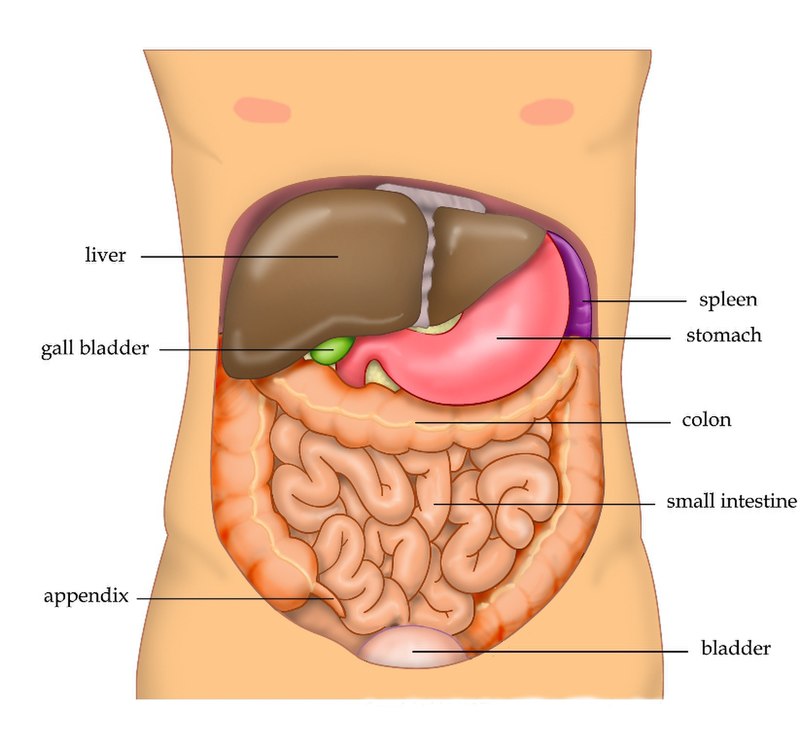What does the liver do? (8 functions)
1. Size. The liver is the largest internal organ in the human body, weighing around 1.5 kg in adults.
2. Anatomy. The liver is located on the right side of the body, just below the diaphragm, and is protected by the rib cage. The liver is reddish-brown and shaped like a wedge, with the small end above the spleen and stomach and the large end above the small intestine.
 Anatomy of liver
Anatomy of liver
It has two blood supplies: oxygenated blood flows from the hepatic artery; and nutrient-rich blood flows from the hepatic portal vein.
3. What does the liver do? The liver performs over 500 functions in the body, including filtering toxins from the blood, producing bile to aid digestion, storing vitamins and minerals, and regulating blood sugar levels. We will now describe some of its functions.
4. The liver is the body’s chemical factory (8 main functions). Here they are:
- The liver produces (makes) bile – this is a bright yellow-green liquid that goes into the small intestines to help digest the big chunks of food we eat. In the liver the gallbladder stores the bile juice and then sends it out to the food that will later go in to the small intestine
- Stores glucose when we eat – and then puts the glucose into the blood when our blood glucose level goes down
- Takes protein and fat and turns it into glucose – this is important if we have no food to eat. We can use the fat we have saved, and make it into glucose to use
- Makes some fats and cholesterol
- Metabolises (breaks down) many things in the blood – e.g. haemoglobin; proteins like enzymes, insulin, and serum amyloid A; ammonia; drugs, toxins and waste from the body
- Stores (keeps) vitamins and minerals
- Makes many proteins – e.g:
- Coagulation proteins
- Albumin
- In foetuses – when they are very small, the liver makes red blood cells. Hence the liver starts producing blood before we are born.
5. The liver is divided into two main lobes – which are further divided into smaller lobules. Each lobule contains thousands of liver cells called hepatocytes.
6. The liver is the only organ in the body that can regenerate itself. If a portion of the liver is removed, it can grow back to its original size within a few months. When people donate half their liver (for a transplant to another person), the remaining part of the liver regenerates the section that was removed.
7. Hepatitis – which is inflammation of the liver, can be caused by viruses, alcohol, drugs, and other factors. If untreated, hepatitis can lead to liver damage and liver failure.
8. Cirrhosis – is a chronic liver disease that occurs when healthy liver tissue is replaced with scar tissue. It can be caused by long-term alcohol abuse, hepatitis, and other factors. Again, if untreated, cirrhosis can lead to liver failure.
9. Liver cancer – is the sixth most common cancer worldwide. It can be caused by chronic liver disease, viral hepatitis, alcohol and other factors.
10. Non-alcoholic fatty liver disease (NAFLD, or ‘NASH’) – is a condition in which excess fat accumulates in the liver. It is becoming more common due to the rise in obesity and diabetes.
Summary
We have described what does the liver do? (8 functions). We hope you understand it better now.

